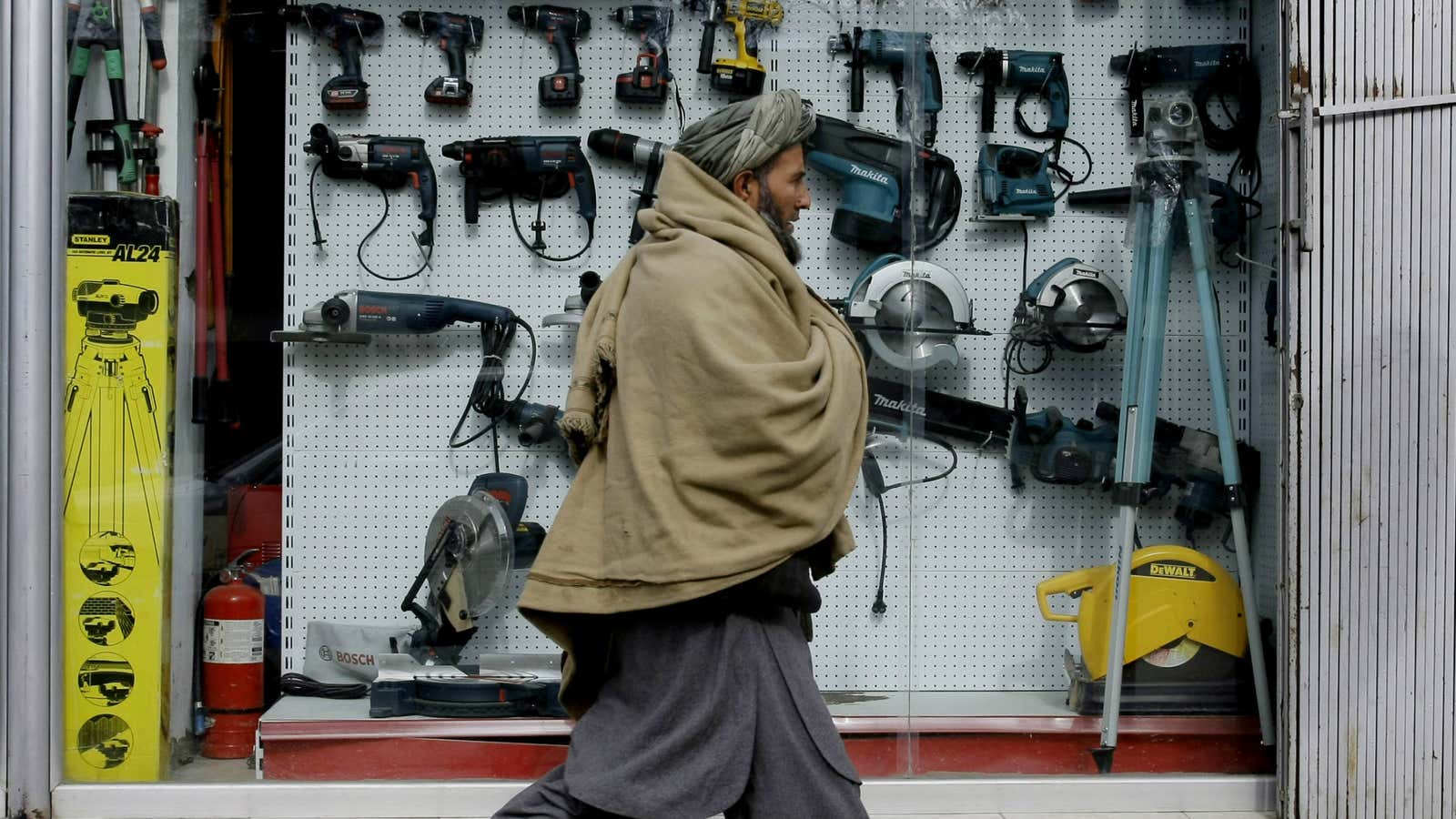For two years, the US State Department and the Pentagon have been incubating a plan to win the Afghan war without actually defeating the Taliban on the battleground. The idea is to triumph commercially by building a “New Silk Road”—a transportation-and-energy route to the West whose long-term financial dividends would prompt combatants to set aside their arms and get rich instead.
Now China is stepping up an apparent effort to outpace the US plan to reconstruct the ancient trade route.
The US idea is a network of roads, electric grids, rail, energy pipelines, and assorted commercial ventures along a channel leading from Afghanistan to the world at large. It would end up in Europe–ignoring China, Russia and Iran, the region’s biggest and most geopolitically assertive players.
Beijing’s less-ambitious version, by contrast, goes east, into China. It does not have a name, but it does appear to be actually materializing. The most recent development is talks between the China National Petroleum Corporation and the Afghan government for rights to drill for natural gas in a large tract south of Turkmenistan. CNPC appears to be in a leading position to win the rights, according to people familiar with the situation.
If CNPC does obtain all or part of the tract, and it turns out to contain commercial volumes of gas, it would tie together a string of four Chinese-held natural gas fields in Central Asia. In order to monetize them, CNPC is contemplating the construction (paywall) of a pipeline that would connect the four reservoirs.
The proposed pipeline, to be built by 2017, would begin with an onshore natural gas field that CNPC already owns in Turkmenistan; roll south and pick up the gas from the new tract in Afghanistan; continue east to another CNPC oil-and-gas field in Afghanistan called Amu Darya; north to Tajikistan’s Bokhtar gas field, in which CNPC is partnered with France’s Total; and continue east with all that fuel to a terminus in China.
The pipeline and gas assets are in addition to an Afghan copper mine that the China Metallurgical Group obtained in 2008 called Mes Aynak, from which the company says it may build a railroad.
If China does succeed in drawing the resurrected Silk Road to the East, it could end up achieving the same aims as America seeks: an Afghanistan that does not crumble into dangerous chaos when NATO troops leave next year. In fact, since at least 2009 middle-ranking US military officers have embraced just such a Chinese role in stabilizing Afghanistan. Their superior might want to start listening.
